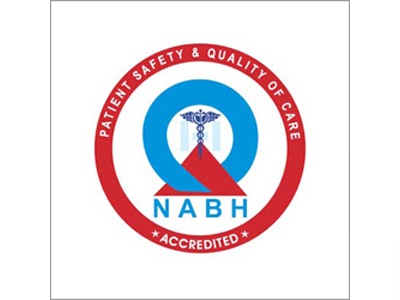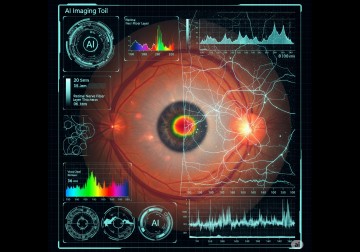Sirisha Senthil, Raghava Chary, Garudadri Chandrashekar and others evaluate the efficacy of an offline AI tool to identify glaucoma from fundus photos off a smartphone camera. The study presents real-world evidence of an effective, AI-powered screening tool for glaucoma.
Glaucoma, a leading cause of vision loss and blindness, is difficult to screen for and detect in large, public health settings. It is a set of conditions that culminate in irreversible damage to the optic nerve that relay visual signals to the brain. Glaucoma, often described as the ‘sneak thief of sight,’ presents with subtle and subjective changes to the eye that often require precision equipment and trained professionals to detect. Most people with glaucoma notice no symptoms until the advanced stages, by when it is too late to protect their vision. While it is a leading cause of sight loss, glaucoma is estimated to affect about 1 in 30,000 people, and its prevalence varies by population; African and Asian ethnicities seem to be at a higher risk. What this means is that one must screen and sift through scans or images of many normal eyes to detect those at risk—and identify them accurately.
In 2025, this set of tasks--image-based analysis, large volume data, enhancing human capabilities—are best suited for the Artificial Intelligence (AI) revolution that is sweeping through the healthcare landscape. The volume and quality of “fundus” images—photos of the back of the eye—has also increased considerably, thanks to improvements in the optics and computational photography of smartphones. A new generation of fundus equipment match smartphone cameras with software to detect glaucomatous patterns in the back of the eye. Over the past decade, machine learning and AI systems have been building on capabilities in processing fundus images to detect glaucoma. A variety of tools are available on the market, each with its own set of training data and limitations. Yet, there are few that have prospective validation for their ability to identify patients with referable glaucoma.
In a new three-month, prospective, observational study published in PLOS One, Drs Sirisha Senthil, Chandrashekar Garudadri, and their collaborators from Remidio Innovative Solutions Inc. report on the real-world performance of an offline AI tool in detecting patients with glaucoma for referral. They compared the tool against a glaucoma specialist’s diagnosis for efficacy testing. A smartphone-based, non-mydriatic portable fundus camera with an inbuilt offline AI algorithm was used to screen 213 participants (418 eyes; 62% male). Patients were sorted into 3 groups: no glaucoma (the controls), ‘glaucoma suspects’ (the disc has glaucoma characteristics, but not definitive), and those with ‘definite’ glaucoma. The final category was further sorted into early, moderate, and advanced. All patients received a comprehensive glaucoma examination and underwent imaging with this tool.
When compared to the glaucoma specialist, the camera-powered AI tool performed with a sensitivity (true positives) of 91.36% and a specificity (true negatives) of 94.12% for patients who needed a referral (definite and suspect cases). A subset of these patients (25%) had a history of diabetes, of whom the specialist found 45 patients with definite glaucoma. The AI tool identified 42 of them. The tool proved to be especially effective in the elderly (those above 65 years), with a 90.57% sensitivity and 100% specificity in this group. The study highlights a powerful new tool to enable screening for glaucoma in at-risk populations.
‘Glaucoma screening is a reality today and cost effective too. The AI integration of screening will increase detection and help reduce burden of glaucoma blindness. This can be easily integrated in general ophthalmologists clinics as well as integrate with diabetic retinopathy screening in the population,’ notes Dr Sirisha Senthil, corresponding author of this paper, and Head, VST Centre for Glaucoma Care at LVPEI.
Citation
Senthil S, Rao DP, Savoy FM, Negiloni K, Bhandary S, Chary R, Chandrashekar G. Evaluating real-world performance of an automated offline glaucoma AI on a smartphone fundus camera across glaucoma severity stages. PLoS One. 2025 Jun 26;20(6):e0324883. doi: 10.1371/journal.pone.0324883. PMID: 40569941; PMCID: PMC12200649.
Photo credit: Generated using Google Gemini



